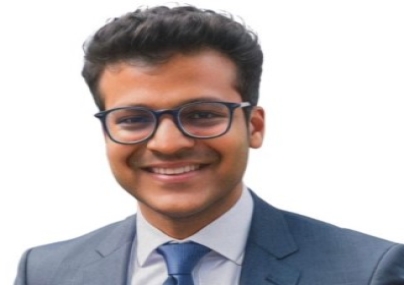
In recent years, more and more law firms have brought on board chief innovation officers to shake things up, with the aim of getting vital competitive advantage in an industry often described as stagnant. Holders of this relatively new title share their vision and action plans on how to bring about effective disruptions to take their organisations forward.
ALB: Can you tell us more about your role and major responsibilities?
BEN ALLGROVE, global chief innovation officer and partner, Baker McKenzie: In addition to being a practicing technology lawyer, I am Baker McKenzie's global chief innovation officer. In that role, I have three main responsibilities. First, I advise our leadership on change in the legal service market and what it means for our clients and our strategy.
Second, I am the executive sponsor for our internal innovation programme, Reinvent, which includes our BakerML team tasked with building our internal capacity to use AI technologies as they come to market. And third, I am tasked with being one of the voices having conversations with our clients, the market more generally and our people about the change that is happening (and yet to come).
JONATHAN VOO, Asia innovation lead, Mayer Brown: As the Asia lead for innovation, I have a unique opportunity to shape the future of legal services in this dynamic region. Working with a global team of legal and non-legal professionals, I help our clients find innovative solutions to their complex and evolving challenges. I also spearhead pilot projects to introduce new processes and offerings that improve our internal efficiency and quality.
But innovation is not just about technology or tools. It is also about culture and mindset. Law firms face unprecedented disruption and competition, and we need to be agile and adaptable to succeed. That's why I am passionate about fostering a culture of innovation across our organisation, empowering our lawyers with the skills and confidence to embrace change and deliver value.
Leading innovation in the legal industry is both rewarding and challenging. I relish the opportunity to collaborate with diverse and talented colleagues, challenge conventional wisdom and create a positive impact on our clients and our firm.
ALMA ASAY, chief innovation and value officer, Crowell & Moring: When I started at Crowell in 2021, I was responsible for standing up the new practice innovation department. We now have an innovation team of five. I also oversee research services. I'm responsible for liaising with our internal stakeholders, including both attorneys and other legal professionals, and our clients to learn where opportunities exist to enhance our delivery of legal services and otherwise add value, then prioritising and implementing solutions.
It's a diverse role that requires me to understand competing perspectives, the intricacies of our legal practices and operations, and what's happening across the legal industry. Examples of some of the projects I'm currently working on include developing a multi-pronged strategy in response to recent developments in generative AI, building out a new approach to data and reporting, deploying a new knowledge management system, piloting an automated timekeeping solution, finding new ways to define and measure partnership with our clients, creating proprietary subscription-based monitoring services, and socialising the value of innovation generally and specifically with regard to our projects.
CARYN SANDLER, partner and chief knowledge and innovation officer, Gilbert + Tobin (G+T): I lead the firm's Legal Service Innovation (LSI) team, which consists of more than 70 specialists working in legal transformation, technology, informatics, knowledge, and legal project management roles. Our LSI mandate is to identify opportunities to optimise and innovate the firm's legal services – whether through reinventing legal processes, developing in-house technological capability including Generative AI, adapting, and customising third-party software to automate legal processes, or creating new partnerships for legal services. To keep G+T ahead of the increasing technological and competitive disruption in the business of law, it is my responsibility to ensure LSI offers market-leading legal operations and innovation that forms an essential part of G+T's delivery of high-value legal services. I am also responsible for ensuring our lawyers are equipped with the necessary skills and capability to succeed as "future-focused" and digitally literate lawyers.
I also lead our legal transformation consulting capability, G+T Innovate. This offering was developed to support in-house legal teams - knowing they needed to change how they worked but were unclear on where to start and how to drive effective change. In meeting this client need, I have been fortunate to work on market-leading transformation projects for prestigious ASX 20 and international companies.
Given the breadth of services our multi-disciplinary LSI team delivers, my role requires me to be intimately across all aspects of the G+T business. To that end, I'm able to lean on my many years in practice as both a corporate and a knowledge lawyer in top-tier law firms in Australia and abroad, which has afforded me an in-depth understanding of the law, legal processes, the intricacies of transactional work and insight into, and empathy for, ways in which lawyers work.
ALB: What makes the role of chief innovation officer relevant or necessary in organisations like law firms, which traditionally enshrine hierarchy and legacies?
ALLGROVE: I challenge the premise of the question. Hierarchy and legacy are not necessarily always negatives, and, in any event, many law firms, and certainly ours, have long since moved on from some of the stereotypes of what a "traditional" law firm is like.
That said, it is true that the private practice legal market is built on a very successful legacy business model, which, along with some of the constraints of the partnership structure, means it is not always easy to implement transformation projects. We have found that having an identified CInnO helps us have the right conversations internally; ensuring that there is someone within our leadership with the mandate and profile to challenge our strategy and pace of change. Since taking up the role, my mantra is to make our leadership perpetually uncomfortable, and my lot is to be perpetually frustrated.
VOO: The role is a vital function for law firms in the current market, where they face rapid change and diverse challenges in the Asian region. To succeed in this context, law firms need to balance respect for tradition and legacy with a willingness to embrace new ways of delivering value to clients, engaging, and developing their people, and optimising their operations.
A dedicated innovation leader can help firms achieve this balance by fostering a culture of curiosity and experimentation, promoting agile and collaborative working practices, and aligning innovation initiatives with the firm's strategic vision and goals. Being able to connect and relate to key decision-makers, as well as our future leaders at Mayer Brown, is important for this journey.
ASAY: At some level, all attorneys are impacted by external forces that change the way we practice. There is a tired refrain that attorneys "don't want to" change, but I've found that they're too busy to both understand the shifts occurring and undertake the effort that's been required of them to change. Part of this comes from a disconnect between "IT" and attorneys who speak fundamentally different languages. The role of a chief innovation officer bridges that gap by speaking both languages, acknowledging the legacies, and negotiating solutions that meet the requirements on all sides to stay in step with modern ways of practice. Critically, the hierarchy is essential to overcoming legacies. By holding a leadership role and interfacing directly with firm leadership, we have the opportunity to inspire and implement change from the top down in ways that wouldn't be possible through traditional innovation approaches.
SANDLER: Clients today are seeking more than just legal expertise; they want efficiency, transparency, cost-effectiveness, and innovative legal solutions. Enshrined hierarchies and legacies are not immune to the reality that in-house legal clients are increasingly being asked to "do more with less", which then translates into their raised expectations of what must be delivered by elite law firms. Technologies and "ways of working" have also advanced over the years to allow for improved legal productivity and service delivery.
In order to meet these expectations, chief innovation officers must necessarily integrate innovative, operational and technological expertise with their firm's legal capability, to tackle clients' sophisticated, high-value business challenges. This opportunity requires the chief innovation officer to become a catalyst for change. This will be fundamental to the ongoing success of any law firm in a highly competitive market.
ALB: What are the most important qualities that a chief innovation officer needs to possess and what advantage does a law firm with such a role have compared to its peers?
ALLGROVE: Resilience, energy and optimism are three qualities that have certainly held me in good stead. But I also think that a good CInnO needs to be a business realist. I do not subscribe to the "platform is burning" approach to effecting change in organisations. The reality is that law firms have been doing, and continue to do, very well commercially. That fact argues against blowing up business as usual too soon. But that does not mean that the model is not under pressure, and there is certainly a client demand for a different way. Law firms that can hold both those ideas in their heads at the same time are the ones that are going to prosper. In our experience, having a CInnO helps with that.
VOO: As a leader of innovation, a vital quality is to stay ahead of the curve and be a visionary leader who combines strategic thinking and technological expertise to collaborate with key stakeholders at our firm, power of influence and be able to adapt in a changing legal landscape. Having this role at Mayer Brown has enhanced efficiency, improved client service, and gained a competitive advantage. Through automation, process improvements, and leveraging technology, we have been able to streamline operations, deliver accurate legal services, and differentiate ourselves in the market.
We are one of the few law firms in Asia (particularly in Hong Kong) that has embraced innovation by appointing an Innovation Leader. We have dedicated resources to adapt to the evolving legal landscape, respond to industry disruption, and meet client needs effectively. Mayer Brown's focus on innovation allows it to leverage technology, data analytics, and automation, resulting in optimised time, cost savings, and enhanced client satisfaction. We strive to attract and retain top talent and continue to grow and explore our firm's expertise.
ASAY: The most important quality is a sense of empathy. Innovation is, at its core, about humans, far more so than technology. The best innovation professionals can empathise with stakeholders holding divergent perspectives and find a path toward collective success.
A law firm with a chief innovation officer has the advantage of realising the benefits of true change. Any firm can purchase a technology and put out a press release touting the shiny new thing. A firm with an innovation leader among its senior ranks is more likely to see the kind of adoption and real-world successes that create an actual, measurable impact on the business and clients' perception of the firm.
SANDLER: Unsurprisingly, it is essential for chief innovation officers to have a deep interest and innate understanding of how innovation and technology can deliver benefits to an organisation. In driving change and always asking how we can do better, Chief Innovation Officers assume a true leadership position, which requires ambition, grit, comfort with the ever-increasing rate of change, and a passion for learning and supporting others.
The role brings a number of advantages for law firms, including driving a culture of collaboration and continuous improvement, uplifting legal technology capability (including the recent focus on generative AI), better client experiences and cost savings, and the ability to respond to client expectations for innovative legal solutions, as well as creating an innovative, forward-thinking culture that attracts top talent.
ALB: From your understanding of the market, particularly at traditional law firms, what are some of the challenges they face when looking to innovate, and what would you suggest would be the ways to overcome these?
ALLGROVE: There are two main barriers. One is talent-related, and one is structural. The talent barrier results from the law being an expert profession. The legal services market is built around selling expertise, not services. True innovation requires a shift from the former to the latter.
The structural barrier is the partnership + billable hour business model. It limits the ability to invest in medium to long-term returns. Overcoming these will take time. As I said previously, it is a model that has delivered very impressive returns for some time now.
There is also a third barrier, which is less often talked about: the demand side. There is no doubt that there is client demand for things to change. But the buying patterns are clear evidence that either that demand is not translating to changed buying behaviour or that there is, in fact, not yet a viable competitor for the majority of what is currently provided via traditional models. That will change; but until it does, supply side innovation will always be constrained.
VOO: While innovation is important for law firms to remain competitive by meeting evolving client needs, some traditional firms face significant barriers that inhibit change. In Asia, some exhibit risk-averse traits where established practices are preferred over experimentation with new ideas.
Implementing gradual and incremental changes, along with actively developing use cases by lawyers, has proven to be advantageous. Furthermore, emphasising the importance of listening to client feedback can contribute to positive outcomes.
In addition to external factors, law firms often face internal resistance to change from lawyers who are accustomed to existing workflows. This resistance can pose challenges to implement innovative practices. Moreover, the prevailing billable hour systems commonly used in firms can discourage value-added work and limit the time available for lawyers to develop new skills. These operating models present significant obstacles that need to be addressed in order to foster a culture of innovation within the firm.
The presence of established processes and a reluctance to take investment risks can often hinder innovation within law firms. It is possible to overcome these barriers by fostering cultures that are tolerant of failure and effectively communicating a vision for the future through change management initiatives. Providing incentives, hiring experts, and allocating dedicated budgets to support strategic pilot projects before firm-wide rollouts are also effective strategies.
ASAY: A big challenge is where to focus. If not careful, every problem can become a project. To overcome this, I suggest a listening tour. The benefits include: (1) gaining a greater understanding of the firm's business and clients so you can predict the likelihood of success and impact of initiatives, (2) identifying the outsized challenges and opportunities that warrant attention, and (3) finding people and resources in unlikely areas of the firm that can expedite your path to success. I also suggest saying, "not now, but we'll keep it in mind" and operationalising a project management system to track all ideas. Other common challenges include dealing with bureaucracy to get projects approved/funded and soliciting bandwidth from others needed to bring your vision to life (e.g., IT). To overcome these, I'd circle back to empathy.
SANDLER: The perceived value of innovation can remain a barrier for some stakeholders in the legal industry. When I started my role as chief innovation and knowledge officer, I knew there was a hurdle in gaining the support of the partnership to advance G+T's client service model and achieve its strategic objective to position itself in the market as a leading innovative law firm. To get our partnership and people invested, we needed to "sell' our vision for innovation and instil a belief that we could deliver on what was an evolution of our existing business model. The firm needed to be confident that the investment in LSI and associated legal technology would result in a suitable ROI from both realising efficiencies and generating goodwill with clients and incremental revenue. A vision and mindset certainly helped garner that initial support, but it was ultimately the establishment of a culture at G+T that has kept their support. Clients also expect their elite law firms to leverage the latest technology and deliver efficient legal solutions, which has supported the internal drive for innovation.
Another barrier to innovation is access to time-poor lawyers to work on strategic innovation projects. Amongst other initiatives, we implemented 'Project Invigorate', an initiative allowing lawyer's hours on innovation to be counted as billable work. This signalled to our lawyers a significant cultural shift in how we incentivise innovation.
Taking your people on such a journey of transformation is a deeply rewarding challenge.


